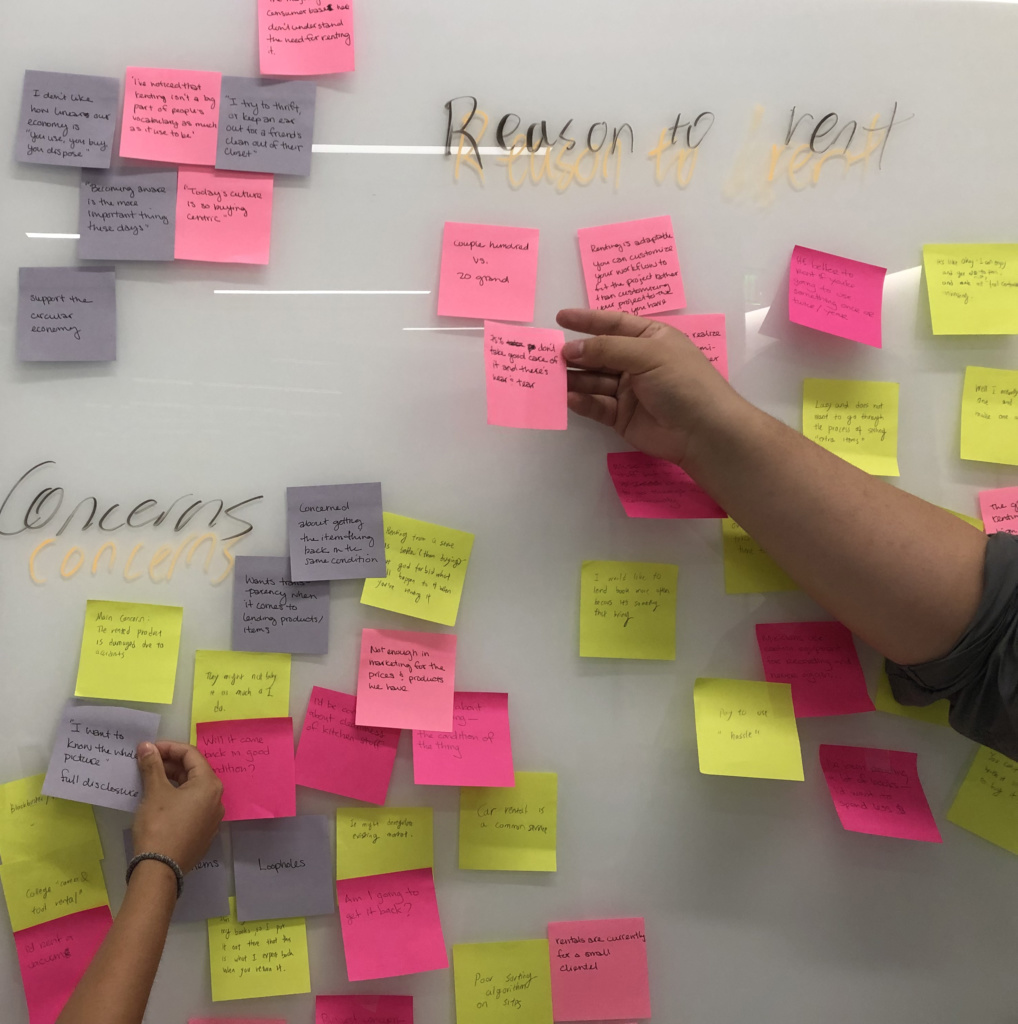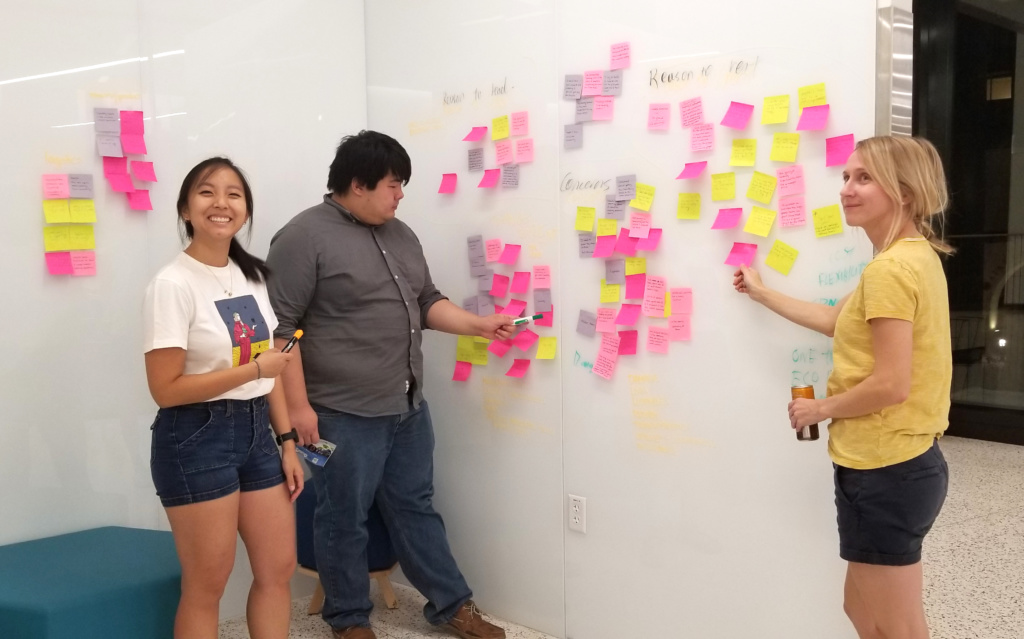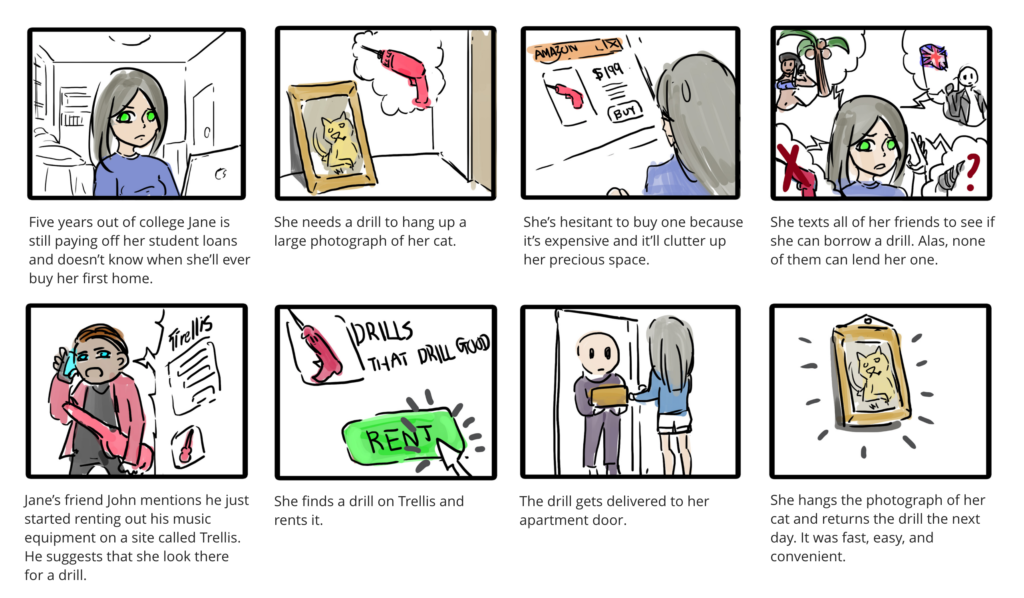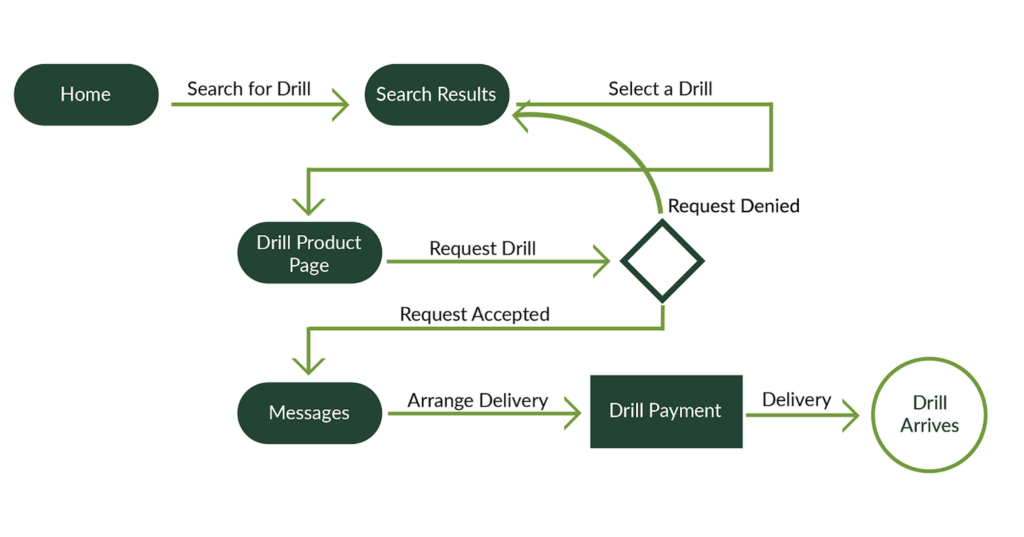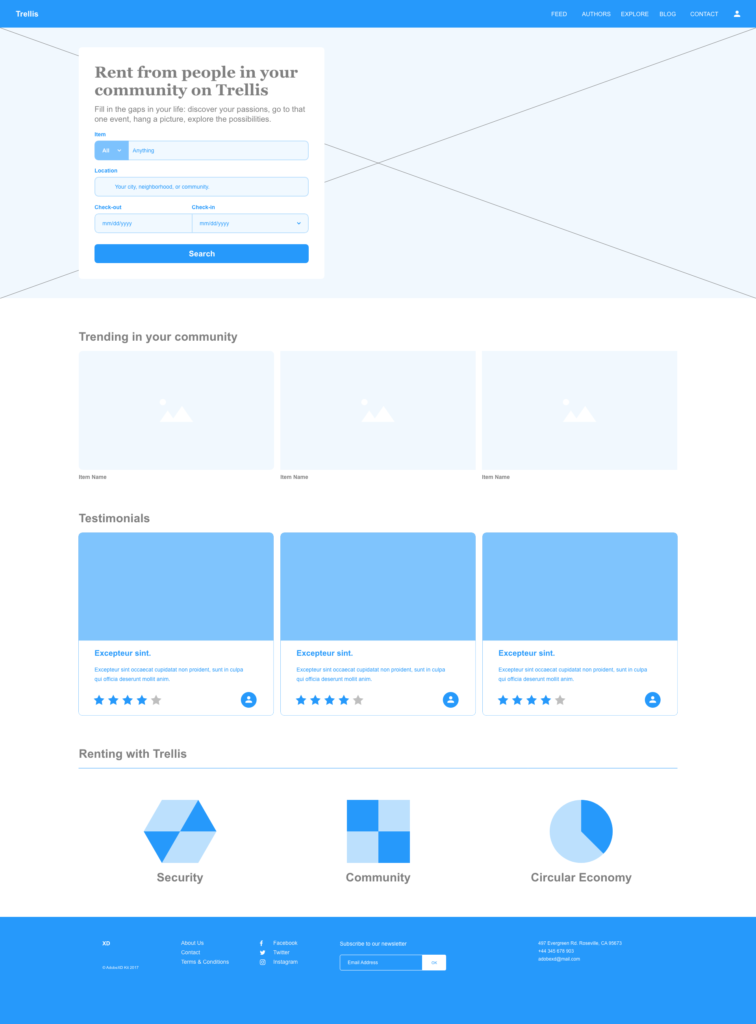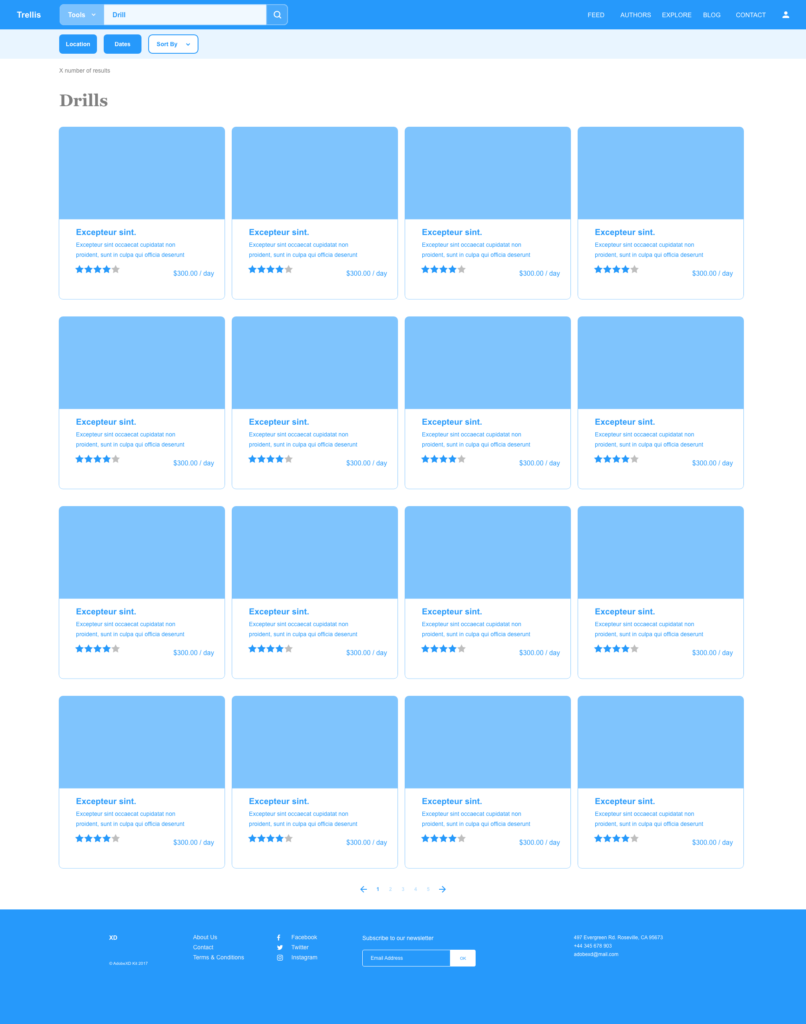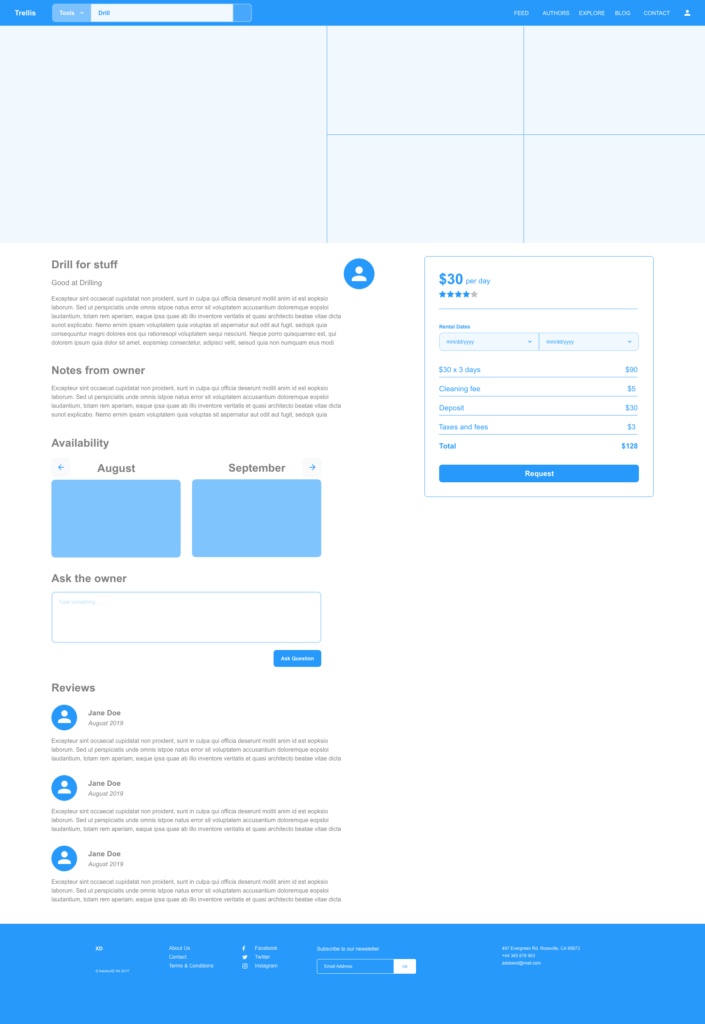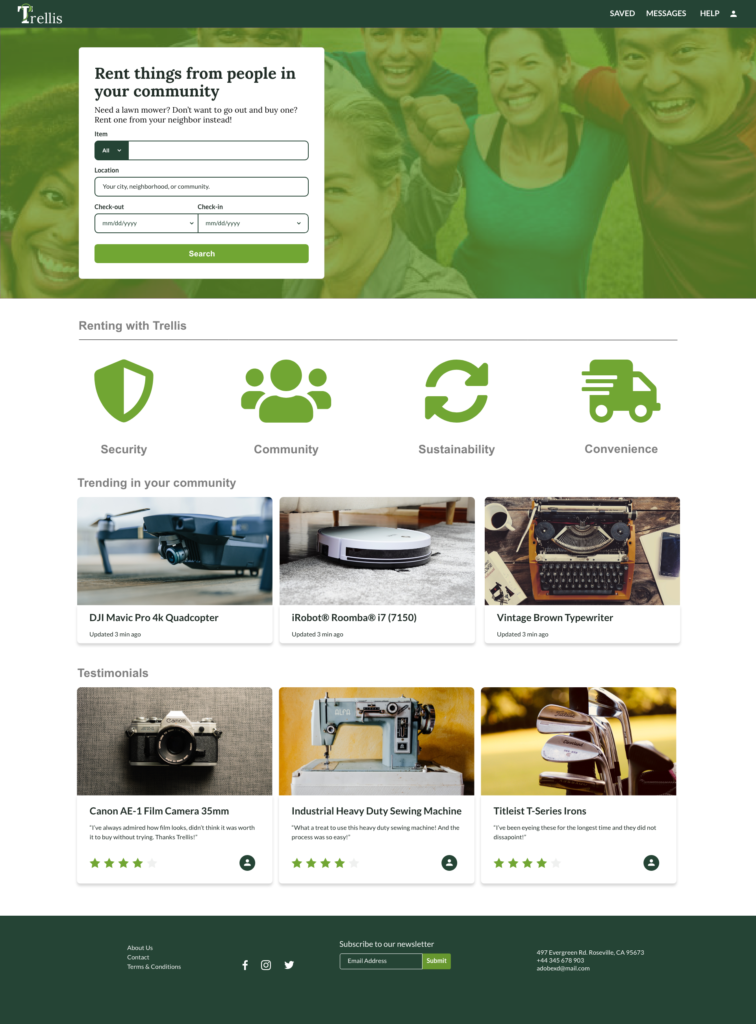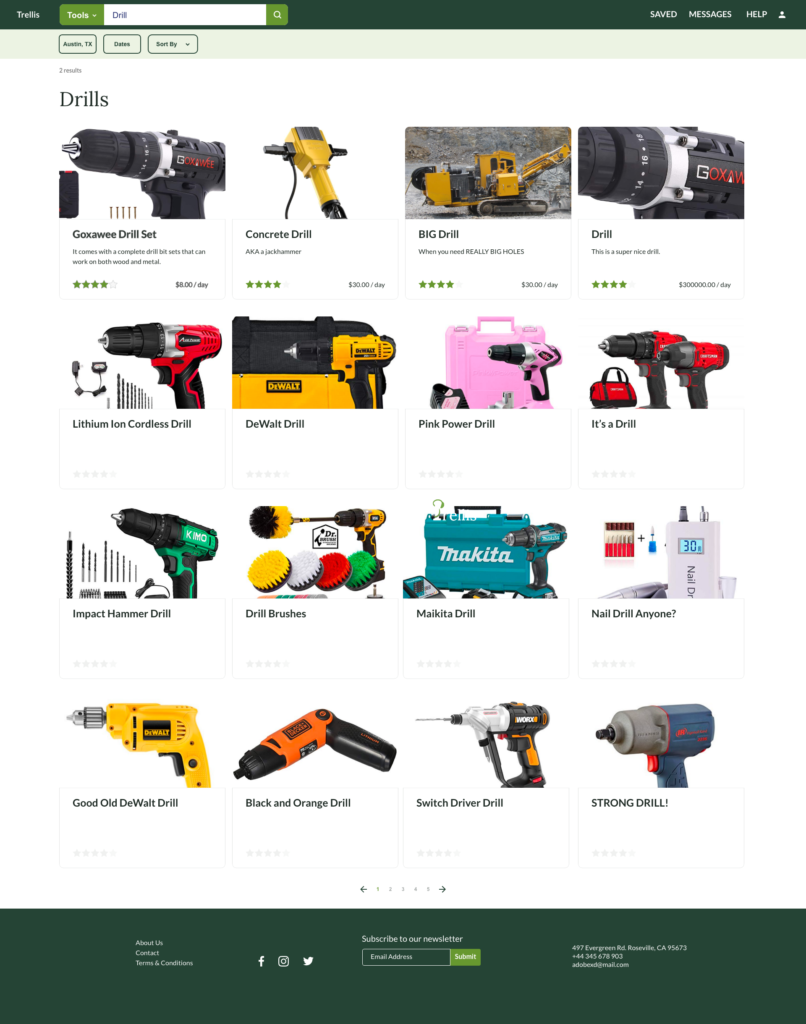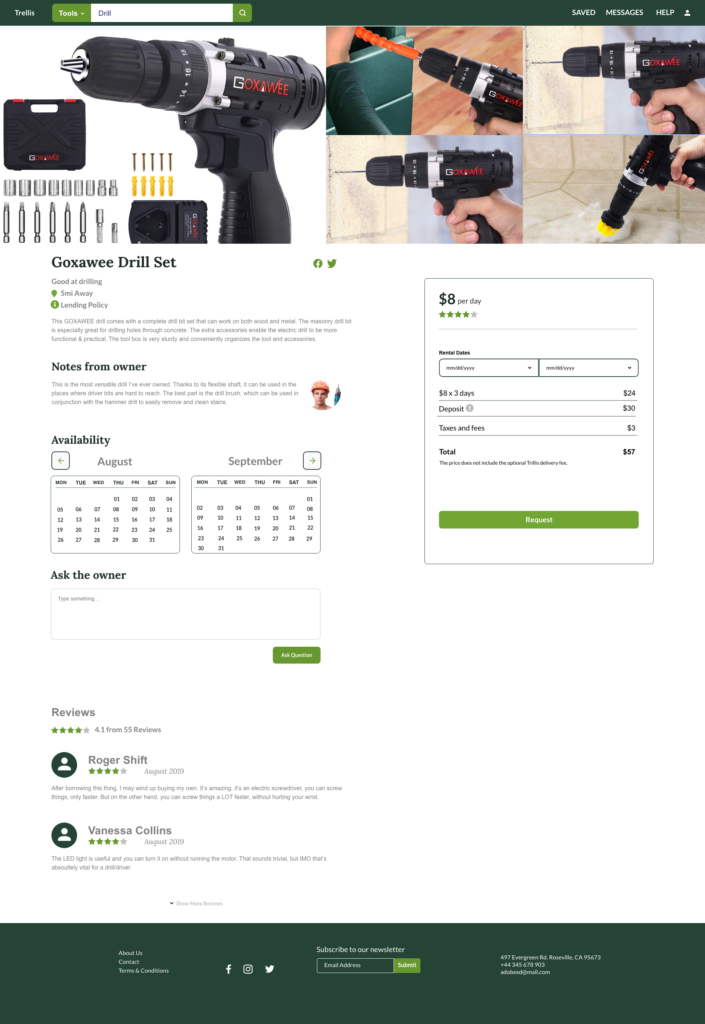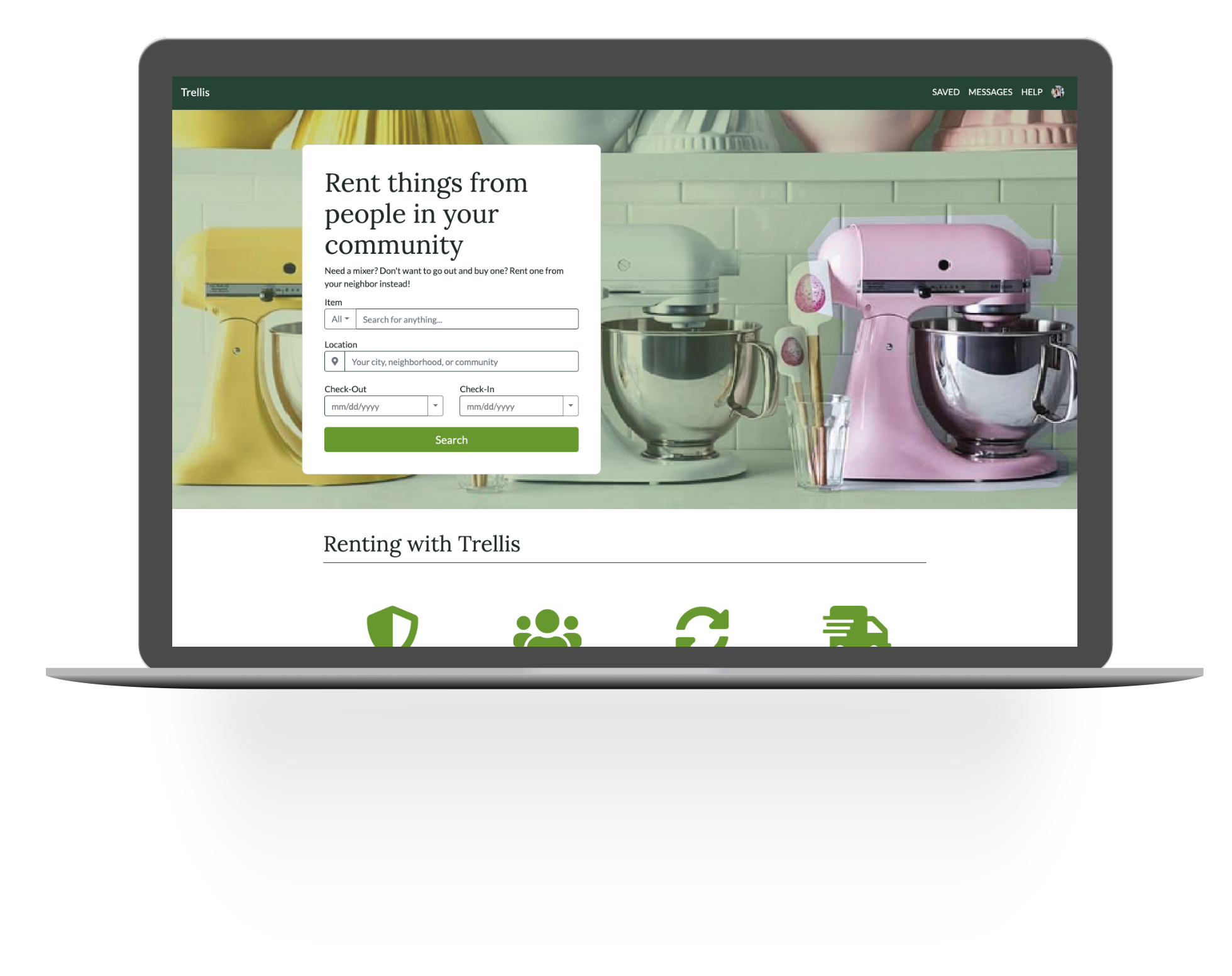
Trellis
A peer-to-peer rental platform
The problem:
Millennials aren’t buying homes. More so than past generations, they’re renting—and it’s not just homes; it’s cars, music, and workspaces, too. With less permanent living situations and space, people wish they could rent instead of buy things that they don’t foresee using very often.
The solution:
We created a peer-to-peer rental platform that gives people access to things that they occasionally need and would prefer not to buy. On the flip side, the platform gives people the opportunity to monetize things they own and don’t use daily.
Team:
Three people
My role:
UX research, UX design, UX writing, UI design
Tools:
Adobe XD, InVision, Miro, Trello
